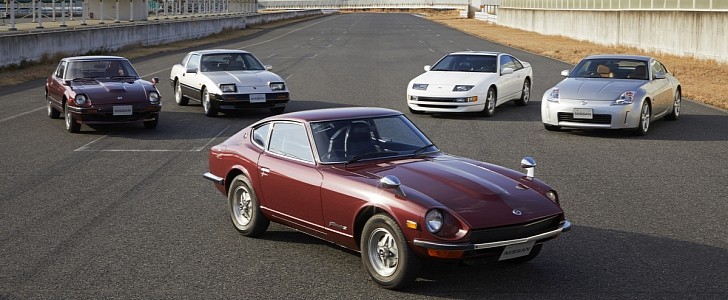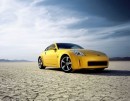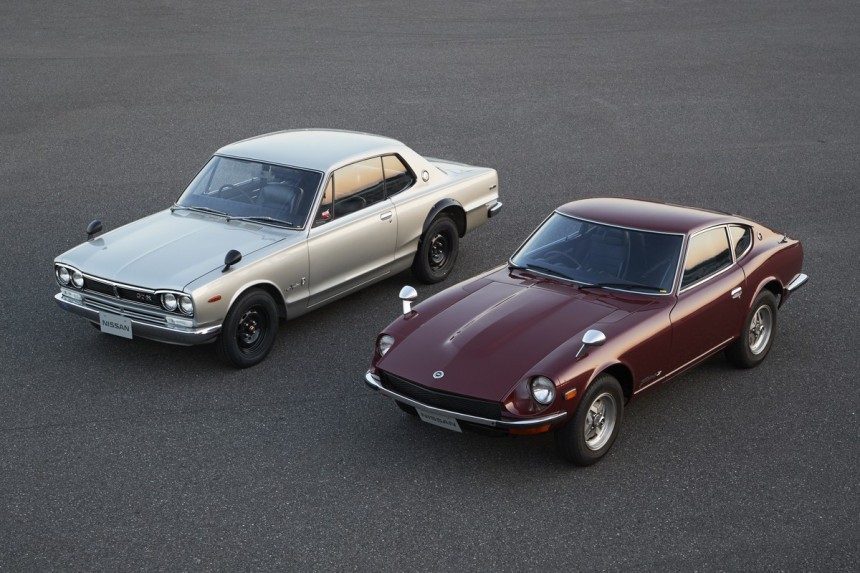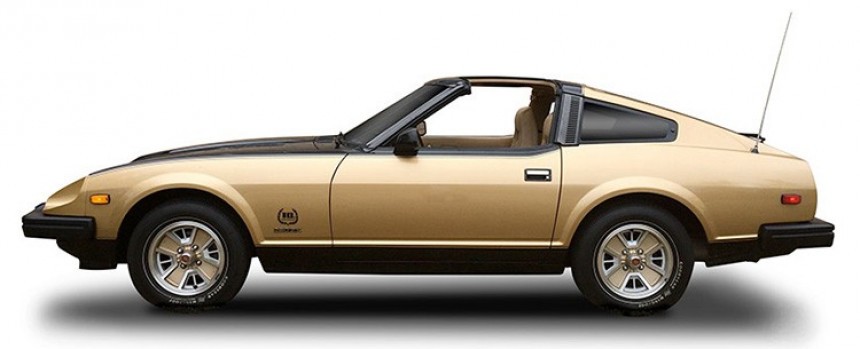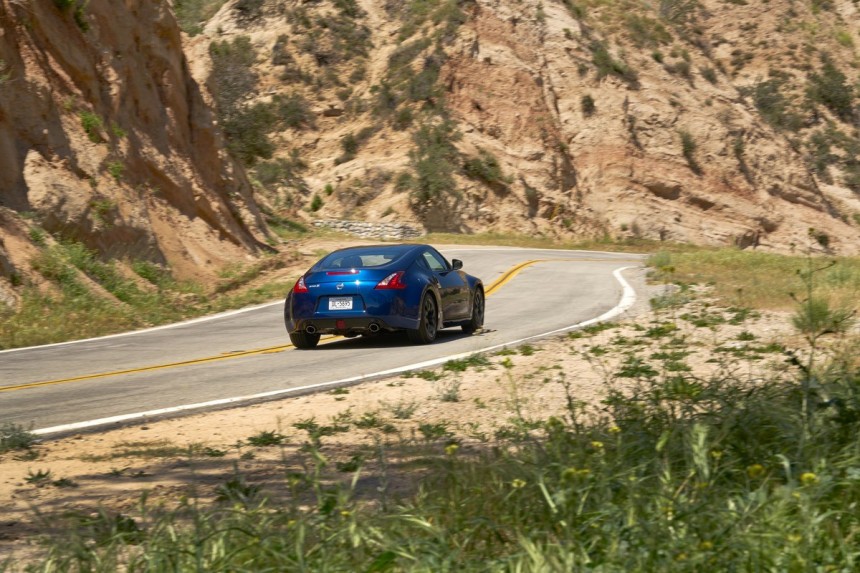Always in the shadow of the bigger and badder Skyline and GT-R series brother, the Nissan Z-Car is still a beacon of thrill, adventure, and affordability among many other iconic cars from the Japanese automaker’s trophy room. It is over 50 years old, has already covered six generations and recently even outlasted one of its main creators, designer Yoshihiko Matsuo.
Everything started in 1969 when Nissan decided to present its own take on the affordable sports car international market. It was a model designed to simultaneously improve the image of the Japanese automaker and offer a stylish GT alternative to existing competitors.
This was done by way of harnessing both the experience with the Fairlady line of roadsters and the technical expertise brought with the inclusion of the Prince Motor Company – the originator of the Skyline and GT-R series.
But it was also something else for Nissan – a way to entice the minds of automotive enthusiasts, deliver good styling and innovative power levels while also making it affordable to build and sell using commonly-available parts in the group’s inventory.
Thus, the Nissan Z-Car was born way back in 1969 – as the Nissan Fairlady Z back home in Japan and the universally-known Datsun 240Z sold in America. The main attraction – a whirlwind of refreshing vitality combined with reliability and jaw-dropping affordability.
By the way, did you know that Nissan’s original idea from the beginning of the 1960s for updating the Fairlady involved Yamaha, resulted in the Yamaha YX-30 prototype from 1961 and ultimately led to the creation of the rivaling Toyota 2000GT? Think about that turn of events for a moment.
Done? Then let us get back to the fair lady Datsun 240Z and that moment in time when it cost just $3,626 (that would be around $26,100 adjusted for inflation). Of course, the model became an instant international hit with sales topping 40,000 units in 1970 and kicking off a legacy that endures to the day. The U.S.-spec 240Z came with a 2.4 liter inline-six engine and Hitachi carburetors for an output of 151 hp.
Back in 1975, the latest version of the Z became the first Nissan in the U.S. with a Bosch fuel injection system. Such was the pace of innovation for the little sports car. The second-generation model became the 280ZX in 1978 to separate itself from the predecessor’s incremental 260Z and 280Z updates.
This variant also marks the first time Nissan decided to harness the star-power of the Z series in order to build collector status. As such, the carmaker introduced for the 1980 model year the Datsun 280ZX 10th Anniversary Edition. This luxury-appointed Z-Car (leather seats, hi-fi stereo) marked a departure from the stylish-yet affordable status of the model.
It also had an extremely limited production run of 3,000 units. Interestingly enough, this model was underpowered compared to the U.S.-spec 1969 240Z, packing a 2.8-liter inline-6 that had just 132 hp and 144 lb.-ft of torque. Yet, it was enough for many to just listen to Call Me by Blondie on the upgraded 40-watt four-speaker sound system...
Yours truly was a newly born back in 1984 when Dynasty was the top-rated show in America and Nissan proceeded with a complete redesign of the Z-Car. Thus, the third-generation Nissan 300ZX was born as the Datsun label was sent to greener pastures. Upgrades included the brand-new VG-series 3.0-liter V6 engine that was available in both naturally-aspirated and turbo form – delivering 160 or 200 hp and even 228 hp outside of America.
The limited-series edition 1984 Nissan 300ZX Turbo 50th Anniversary eagerly jumped a few decades and celebrated the parent company’s establishment way back in 1933. Because we’re dealing with a 1980’s car, the 5,448 units prepared for the U.S. and Canada had lots of crazy touches: a digital instrument cluster with a multi-led tachometer along with a Bodysonic Amplifier that rumbled the front seats according to the music played by the stereo unit.
Yep, these were psychedelic times and the fourth generation Nissan 300ZX (Z32) achieved the one million U.S.-sales milestone back in 1990. It was also the model that broke the hearts of American aficionados with its higher pricing, leading to a retreat from the U.S. market. The hiatus lasted until 2003 when the all-new fifth-generation 350Z triumphantly returned to America.
It was soon followed in 2005 with the 2005 350Z 35th Anniversary Edition that took full advantage of the new FM (Front Midship) architecture and the VQ 3.5-liter V6 capable of churning out 287 hp and 274 lb.-ft of torque. It was the year of the Million Dollar Baby (Best Picture in 2005) and the CSI: Crime Scene Investigation show got a lot of people thinking about the perfect crime.
That does not exist, as opposed to the sixth and current generation of the Z-Car in 370Z guise. It has been so long-lasting that Nissan has already introduced the 2010 370Z 40th Anniversary Edition, the 2018 370Z Heritage Edition and the 2020 Nissan 370Z 50th Anniversary Edition. And you can just meditate on the circle of life – back in 2010 the top Billboard song belonged to Ke$ha and it was called... TiK ToK.
This was done by way of harnessing both the experience with the Fairlady line of roadsters and the technical expertise brought with the inclusion of the Prince Motor Company – the originator of the Skyline and GT-R series.
But it was also something else for Nissan – a way to entice the minds of automotive enthusiasts, deliver good styling and innovative power levels while also making it affordable to build and sell using commonly-available parts in the group’s inventory.
Thus, the Nissan Z-Car was born way back in 1969 – as the Nissan Fairlady Z back home in Japan and the universally-known Datsun 240Z sold in America. The main attraction – a whirlwind of refreshing vitality combined with reliability and jaw-dropping affordability.
Done? Then let us get back to the fair lady Datsun 240Z and that moment in time when it cost just $3,626 (that would be around $26,100 adjusted for inflation). Of course, the model became an instant international hit with sales topping 40,000 units in 1970 and kicking off a legacy that endures to the day. The U.S.-spec 240Z came with a 2.4 liter inline-six engine and Hitachi carburetors for an output of 151 hp.
Back in 1975, the latest version of the Z became the first Nissan in the U.S. with a Bosch fuel injection system. Such was the pace of innovation for the little sports car. The second-generation model became the 280ZX in 1978 to separate itself from the predecessor’s incremental 260Z and 280Z updates.
This variant also marks the first time Nissan decided to harness the star-power of the Z series in order to build collector status. As such, the carmaker introduced for the 1980 model year the Datsun 280ZX 10th Anniversary Edition. This luxury-appointed Z-Car (leather seats, hi-fi stereo) marked a departure from the stylish-yet affordable status of the model.
Yours truly was a newly born back in 1984 when Dynasty was the top-rated show in America and Nissan proceeded with a complete redesign of the Z-Car. Thus, the third-generation Nissan 300ZX was born as the Datsun label was sent to greener pastures. Upgrades included the brand-new VG-series 3.0-liter V6 engine that was available in both naturally-aspirated and turbo form – delivering 160 or 200 hp and even 228 hp outside of America.
The limited-series edition 1984 Nissan 300ZX Turbo 50th Anniversary eagerly jumped a few decades and celebrated the parent company’s establishment way back in 1933. Because we’re dealing with a 1980’s car, the 5,448 units prepared for the U.S. and Canada had lots of crazy touches: a digital instrument cluster with a multi-led tachometer along with a Bodysonic Amplifier that rumbled the front seats according to the music played by the stereo unit.
It was soon followed in 2005 with the 2005 350Z 35th Anniversary Edition that took full advantage of the new FM (Front Midship) architecture and the VQ 3.5-liter V6 capable of churning out 287 hp and 274 lb.-ft of torque. It was the year of the Million Dollar Baby (Best Picture in 2005) and the CSI: Crime Scene Investigation show got a lot of people thinking about the perfect crime.
That does not exist, as opposed to the sixth and current generation of the Z-Car in 370Z guise. It has been so long-lasting that Nissan has already introduced the 2010 370Z 40th Anniversary Edition, the 2018 370Z Heritage Edition and the 2020 Nissan 370Z 50th Anniversary Edition. And you can just meditate on the circle of life – back in 2010 the top Billboard song belonged to Ke$ha and it was called... TiK ToK.
